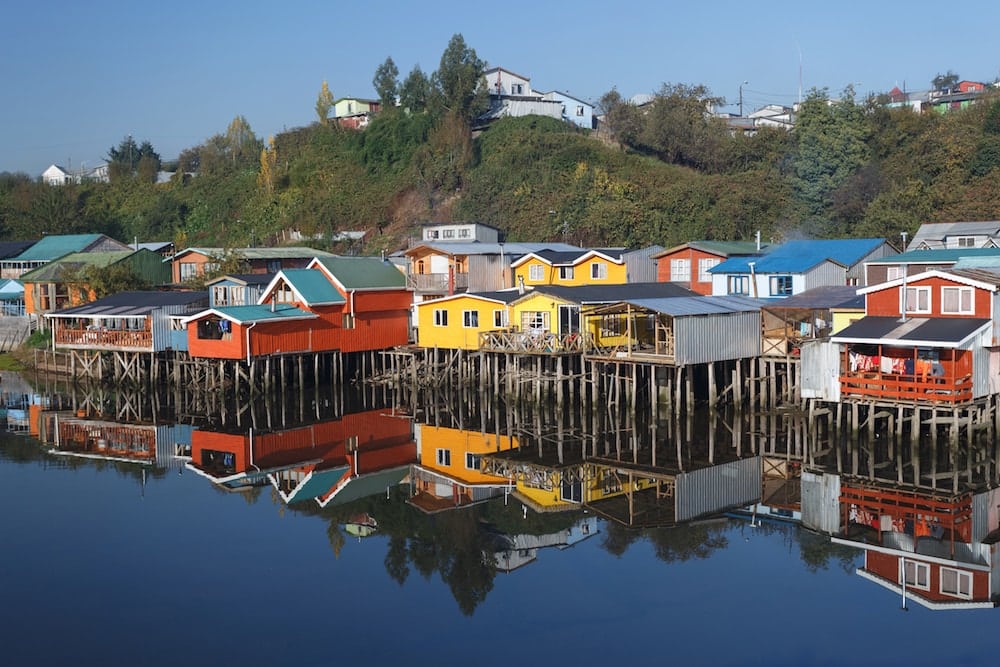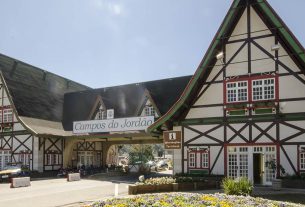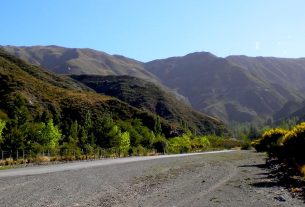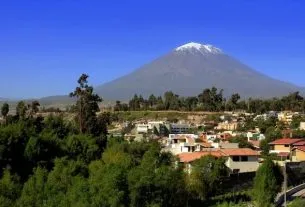Chiloé is an archipelago located off the Chilean coast, made up of anywhere between 33 and 45 islands. I say between 33 and 45 islands because there is not much consensus on the official number: as the tide covers some pieces of land throughout the year, turning them into sea, the count varies. Of these, Ilha Grande is the largest and most important. It is home to the main communes (cities): Castro, the capital, and Ancud, as well as the main points of tourist interest, such as the national parks and the Dalcahue market. Some of the smaller islands have also developed communes, such as Achao, and others are completely taken over by nature.
Administratively, Chiloé is part of the Lakes Region, which would be the gateway to Chilean Patagonia. Culturally, however, the archipelago is something apart. Its relative isolation, together with the mix of cultures that inhabited the region – between the Mapuche people and the Spanish conquerors – enabled the development of a strong regional identity, with gastronomy, folklore and traditions that are only seen there and that surround the islands with a magical atmosphere.
Important Tip: Don’t make the mistake of traveling to Chile without travel insurance. Understand the reason and find out how to get discounted insurance.
The region is famous throughout Chile for its myths and legends, such as Trauco, a demon that seduces and impregnates the island’s girls, and Pincoya, a water spirit that controls the abundance of fish in the region. The figures are part of the popular imagination and are a recurring theme of local crafts, sold in markets and fairs spread across the islands and which, contrary to what happens in many markets around there, are still frequented by residents and are part of their daily lives. . It is also in the markets that you will find fresh fish and seafood, brought daily by Chilota fishermen.
Tours and attractions in Chiloé
Stilt neighborhoods
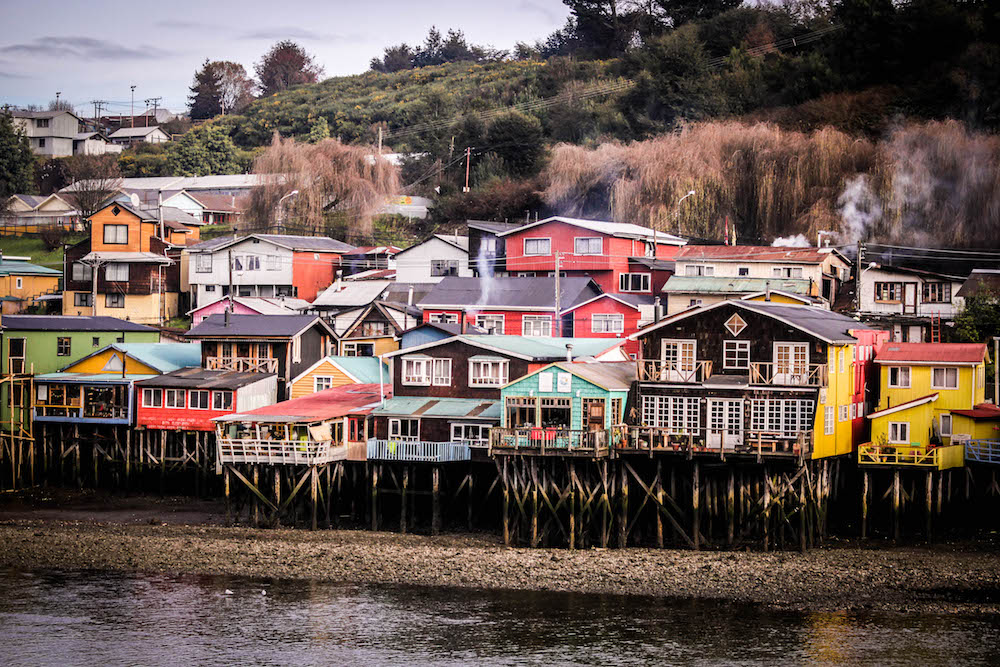
Chiloé was once full of them, but most of the stilt houses fell in the 1960 earthquake, the strongest ever recorded in history. Today, houses that rise above the water are mainly restricted to two neighborhoods in Castro, Gamboa and Pedro Montt, and to some buildings spread across Ilha Grande. The colorful wooden houses are built with two fronts, one facing the street and the other facing the canal, which usually has a balcony used for mooring boats and helping with fishing work.
The houses help to give Chiloé its charm and most of them function as hotels and restaurants. In the past, however, they fulfilled the important function of a comfortable, safe and moisture-free shelter close to the coast for the residents there, who had – and still have – fishing as an important source of income.
Birdwatching
The Mapuche named Chiloé because, in their language, the word means “place of seagulls”. The archipelago is a refuge for more than 147 species of birds, some of which are migratory birds that arrive there during the mating seasons, coming from places as far away as Alaska. There are several birdwatching points in the archipelago, and the best time to see them is between October and March, the spring and summer months. Several agencies offer tours of this type. In general, they pick you up at your hotel, give you a map with the points visited and explain the species that will be seen before heading out into the field. Take binoculars and a camera.
Bahía Pulao, 15 km from Castro, is one of the best birdwatching spots on Ilha Grande, as well as offering wonderful views of the surroundings and hiking and cycling trails. From the Viewing Station it is possible to observe the Black-necked Swan, Colorado Duck, Mallard Duck and 40 other species. This is a good option for those who want to do the tour independently.
Penguins are, without a doubt, the most popular birds on the island. They arrive in Chiloé from Patagonia and the coast of Peru and Chile, to mate and have their young in Puñihuil Bay. To see them, you need to book a boat trip to the location. During the season, there are several departures during the day, but the tours are subject to weather conditions.
Whale Watching
Another friendly animal that shows up around Chiloé is the blue whale. Seeing them is no easy task, but in Chiloé your chances are good: the Corcovado Gulf and the northeast of Chiloé Island are internationally recognized as the area with the highest rate of blue whale sightings in the southern hemisphere. It is estimated that there are over 300 specimens in the surroundings of the archipelago. Excursions to the high seas leave from Puñihuil Bay with the association of micro-entrepreneurs Ecomarine Puñihuil, who have boats suitable for the trip.
Circuit of Historic Churches
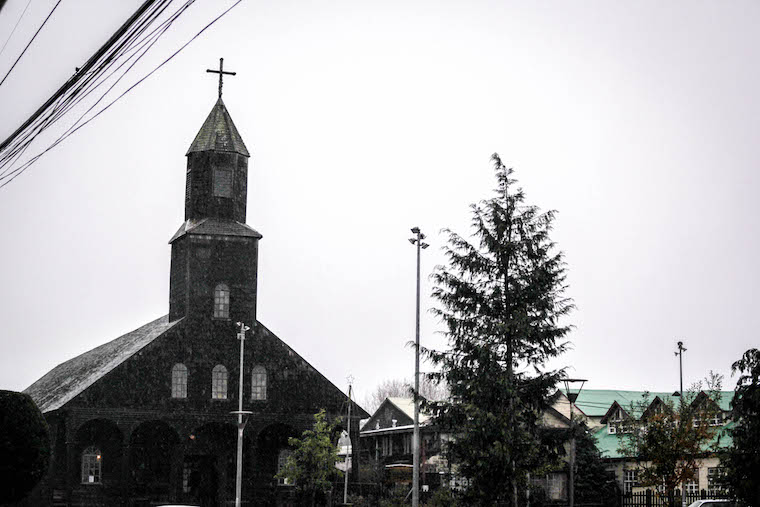
Church of Santa María de Loreto de Achao
The unique architecture developed in the archipelago is a trademark of Chiloé, and the churches that follow the Chilota style are considered UNESCO World Heritage Sites. There are more than 70 temples made of wooden tiles, a type of scale cut into different shapes that is characteristic of the buildings there, which were built during the Jesuit and Franciscan missions and are one of the few examples of wooden buildings from the 19th century still standing. 18 in the Americas. Of these, 16 are on the UNESCO list and form the Circuit of Historic Churches of Chiloé. Nine are on the eastern coast of Ilha Grande, three in Lemuy, two in Quinchao, one in Caguach and one in Chelín.
The oldest is the Church of Santa María de Loreto de Achao, on the island of Quinchao, built in 1730. This is also one of the most interesting, due to its somewhat gloomy appearance. The Chilean government has an application that guides tourists around the circuit, with maps and multimedia explanations.
Trails through Chiloé Parks
Chiloé National Park and Tantauco Park, the two main parks in the archipelago, together have almost 300 km of trails alongside the exuberant local nature. There are walks for all levels: low, medium or high difficulty. The two most famous routes are Cole Cole, in Chiloe National Park, which starts in the village of Cucao; and Abtao, a 20 km long and very difficult path that connects Castro to the Pacific via the coastal mountain range. Other points of interest in the National Park are Chanquín, where Lake Cucao is located, the coastal dunes, which stretch for kilometers; Metalqui Island, where sea lions live, and Lake Huelde.
Tantauco Park is located at the southern end of Ilha Grande, close to Ancud, and has more than 10 trails, one of which runs the entire length of the park.
Markets
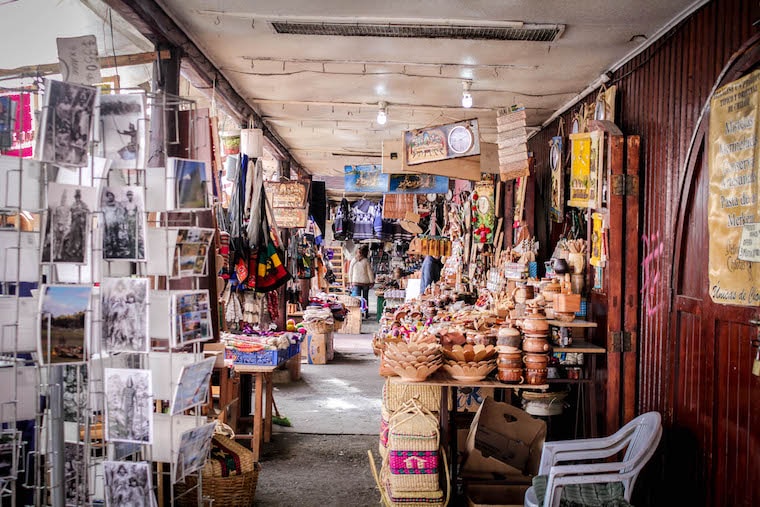
Castro Market, in Chiloé
Much of Chiloé’s public life takes place in its markets. It is there that the archipelago’s residents stock up on fresh vegetables, seafood, cheese, sweets and sell their typical woolen crafts. There are several small markets spread across the Chiloé communes that are certainly worth a visit.
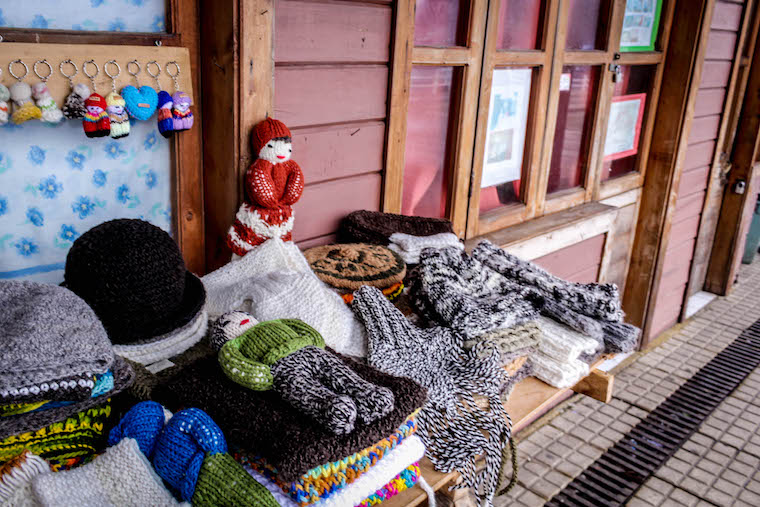
Crafts sold at the Dalcahue market
The one in Dalcahue, which only sells handicrafts, is the most famous of them. There you can stock up on wool dolls, a typical gift from the region, and also buy clothes, blankets, baskets, all handmade by local residents. On Sunday the market is filled with more artisan shops that come from other communes. A good idea is to combine the visit to the market with Nuestra Señora de los Dolores, which is part of the historic circuit, and with lunch in the traditional cooks from Dalcahue.
Gastronomy
Food is an attraction in itself in Chiloé. The most famous dish is curanto, a mixture of seafood, various meats, potatoes and other vegetables cooked in a hole in the ground, on aromatic leaves. If you have the opportunity, be sure to watch the preparation of the dish, which is almost a ritual and an important tradition of the archipelago.
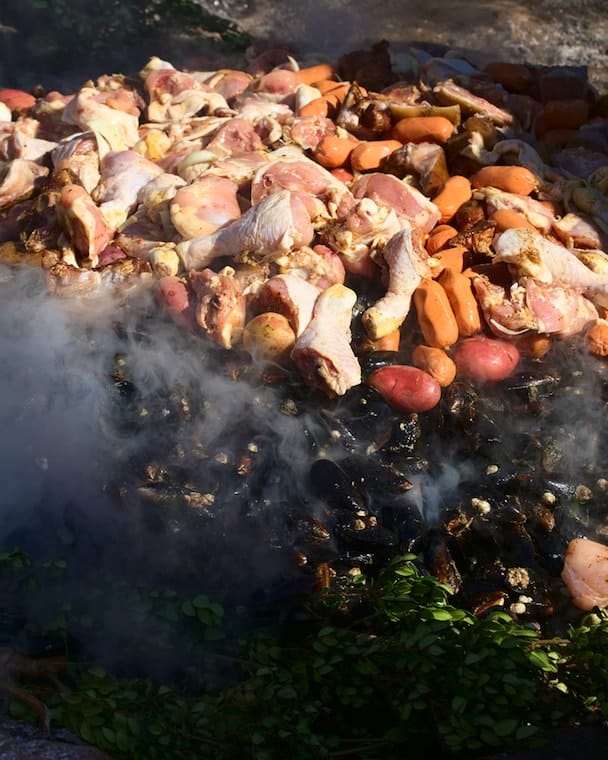
Preparation of the cure. Photo: Shutterstock
Potatoes are ubiquitous in preparations. Almost 300 varieties of the tuber are cultivated there. Seafood is also very present. Thanks to the island’s fishing tradition, there is no shortage of seafood in soups, cazuelas, as well as beef and sheep meat, raised in the interior of the islands.
Read too: Where to stay in Chiloé
From Curanto to Navegado, the typical foods of Chiloé
When to go and how long to stay
The summer months, between November and February, are the best time to visit Chiloé. It is at this time of year when the island’s constant rains come to a halt and when the penguin, migratory bird and blue whale watching seasons occur. The period is also marked by costumbrista festivals, which celebrate the typical traditions of the islands with lots of music, dancing and food. Winter – between May and August – is cold and quite rainy (seriously, I’ve never seen so much water!), so it’s not possible to enjoy outdoor activities, which are the archipelago’s biggest attractions.
To better enjoy the local attractions and culture without rushing, I recommend staying between four days and a week in Chiloé.
How to get to Chiloe
You can reach Chiloé by land, crossing to the island by ferry, or by air. Buses leaving Santiago make the 15-hour journey to Castro at night and cost around 25,000 Chilean pesos (R$130). Those who prefer to break up the trip can stop in Puerto Montt. A good website to search for bus tickets in Chile is recorri.cl. Anyone traveling by car can cross the ferry on their own. There are several departures throughout the day and tickets can be purchased on the spot. Leaving Puerto Montt, the trip to Castro takes around four hours.
Flights to the archipelago arrive at Castro airport. You can fly from Santiago or directly from Puerto Montt, as it is inevitable to stop there before landing in Chiloé.
How to get around Chiloé
The most practical way is to rent a car. This way you will have the freedom to go from one point to another without depending on public transport times and connections. As the distances on the island are not small and travel may not be quick, having a car at your disposal can save you a lot of time. Don’t worry, the roads are in good condition and well signposted. In this text we explain how to rent a car abroad ensuring the best value for money.
But those who don’t want to drive won’t be left in the lurch. The cities and main tourist attractions in Chiloé are connected by bus lines that leave regularly. Therefore, it is best to plan your stay in Castro as this is where the largest number of buses depart from and there are also numerous travel agencies that offer tours with transport to your hotel door.
Where to stay in Chiloé
The communities of Castro and Ancud are the most practical options for staying in Chiloé. Castro, the capital, offers more infrastructure and is in a good position to explore the surrounding area, right in the center of Ilha Grande. This is where the airport, the largest range of hotels in the archipelago and the picturesque stilt houses are located. Nearby are the Dalcahue market, Chiloé National Park and Tantauco Park, as well as the Historical Churches route, another strong mark of typical local architecture. Castro is, without a doubt, the best option for those who do not intend to rent a car, as it is from the Castro bus station that most buses leave for other communities.
In Castro, I recommend the Backpacker Chiloé Sur hostel, which has good value for money for those looking for something economical and cozy, both in private and shared rooms. The daily rate includes regional breakfast and the super friendly owners sometimes prepare drinks and dinner for guests and love to have a good chat at the end of the day. You can also search other hotel options in Castro.
Ancud is closer for those arriving by ferry and to penguin and whale watching points, such as Puñihuil Bay and Caulín Bay, natural habitat for dozens of species of birds, which earned the place the nickname “El Santuario of the Birds”. Therefore, if you travel during the season to observe these animals, staying in Ancud is also a great idea. Those who have more than four days can split their accommodation into two and stay part of the time in Ancud and part of the time in Castro, as the journey between the two cities takes more than an hour. Find hotels in Ancud.
Featured image: Shutterstock
Sign up for our newsletter

Sign up for our newsletter and stay up to date with exclusive news
that can transform your routine!
Warning: Undefined array key "title" in /home/storelat/public_html/wp-content/plugins/link-whisper-premium/templates/frontend/related-posts.php on line 12
Warning: Undefined array key "title_tag" in /home/storelat/public_html/wp-content/plugins/link-whisper-premium/templates/frontend/related-posts.php on line 13

